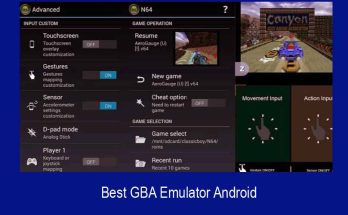Android is a remarkably powerful and innovative mobile operating system that often surpasses Apple’s iOS when it comes to supporting new technologies. 5G, NFC payment, custom keyboards… the list goes on. However, all these advanced features make the operating system complex and extensive. On the surface, the UI is simple enough for casual users who just want to text, make calls, and use their apps, but a layer or two deep in the UI hides all sorts of settings and tools. an advanced user. You just need to know where to look.
Google’s Android mobile operating system seems simple on the surface, but dig deeper and you’ll find plenty of ways to hack it for convenience and customization. Check out our top Android tips and tricks to find out how.
We want you to be able to use Google’s mobile operating system like a pro, and our list of tips and shortcuts can help. These are just a few of the ways you can use Google’s operating system. The list of features is so long that you are bound to find more. Also, check out our list of the best Android apps, and feel free to add yours to our comments section at the bottom of the article. We may add them to future updates to this story!
1. Uninstall Apps You Don’t Need
Most Android phones come with a large number of pre-installed apps. Many are welcomed by almost everyone (maps, emails, browsers, etc.), but there are definitely some you don’t want or need. If you’re just not a podcast guy, you don’t need a podcast app. And phone providers tend to bundle together a set of their own apps that you may never need to use. Long-press an app icon and then select the I entry to go to the details page where you can uninstall it.
Unfortunately, there are some default apps that you cannot uninstall. For example, if you only use Firefox or Edge as your web browser, you still cannot uninstall Google’s Chrome browser. For these apps, you can at least choose Disable, which will hide them from the UI and free up system resources.
2. Use Digital Wellbeing Features
It’s not exactly the healthiest thing in the world to stay up all night texting and room scrolling. Android 11’s Bedtime mode is part of the Digital Wellbeing feature. Not only does it silence your phone at a set time, but it also turns the screen to black and white in case you need to stare at the screen after hours. There is a pause option in the drop-down menu if you need more time before retiring. If you’re looking for more sleep tips, be sure to check out our article on how technology can help (and hurt) your sleep.
Another recommended feel-good feature is Focus Mode, which disables noisy app notifications. Some phones, including the new Pixels and Motorola, will activate Do Not Disturb mode if you turn them face down, a quick and easy way to ease the annoyance. After all, using the work profile hides all those productivity apps when it’s time to relax.
3. Set Up the Your Phone App in Windows
I suspect most people who use Mac desktops or laptops also use an iPhone, which has great integration with macOS. But with the Your Phone desktop app for Windows 10, Android users can get just as much continuity with their desktop, maybe even more. It is easier to start the setup from your PC. Go to the Phone section of the Settings app, select Add Phone, and you’re good to go. You can make calls, send text messages, and instantly view and use photos from your phone on your PC.
Newer Samsung devices and the Surface Duo phone get even more functionality with the Link to Windows option, including running various Android desktop apps in the Your Phone app. If you don’t use Windows, you can receive Android Messages over the web, another annoying feature missing from Apple’s mobile operating system. You can also run Android apps in an emulator on Windows or macOS, but that route isn’t as convenient as your Windows 10 phone.
4. Edit Quick Settings
One thing that doesn’t scare me about Android is that quick settings require two swipe gestures to show more than one row, and even after that you still have two pages. You can make sure the settings you need most often are in the first row by swiping them down. Just click the pencil icon and you can add useful tools like focus mode or dark mode toggle.
5. Install a Launcher App
This is a type of customization that iPhone users don’t get: you can change your phone’s basic home screen by installing a third-party launcher app from the Play Store. Some launchers worth mentioning are Action Launcher, Apex, Lawn Chair, Lightning, Microsoft Launcher, Nova, Niagara, and Smart Launcher.
You can even make your Android look like an iPhone with the iOS 14 launcher, which includes Siri Shortcuts and an App Store icon instead of the Play icon. Want to go back to the days of Windows Phone? There are also launchers that emulate the design of this operating system.

6. Install Apps From the Web
For me, this is one of the biggest advantages of Android over iOS: you don’t have to hold your phone to install an app. Just go to the Google Play Store in your web browser and you can remotely install any app or game as long as you are signed in to the same Google account that is using the phone. If you have multiple Android devices on your account, they will be listed when you install them. This is very handy when you discover an app on your computer and don’t want to fiddle with your phone to get the app.
7. Install Apps From Other Sources
One of Android’s clearly open features is that, unlike iOS, you’re not limited to using a company’s app store. Most users can find any app they want on the Google Play Store, and with reasonable protections. However, if you need something that isn’t there, there’s nothing stopping you from going to the Amazon app store, your phone manufacturer’s app store, or even downloading the app and installing it as an APK (the extension of a file). wrap). Android app).
Important Note: If you go this route, make sure you get the app from a trusted source, as third-party app stores are the main source of Android malware. Research first! Also, make sure to disable the Install unknown apps setting for the source after installing the desired app, just in case.
An example of why you might want to download an app (i.e. install it outside of the official app store) is the mega-popular game Fortnite. Android users can go to the game developer’s website to get the APK, while iPhone users who want to install the game for the first time are out of luck. You can read the process in the article on how to play Fortnite on Android.
8. Beef Up Storage
A big advantage of Android over iPhones is that some phone models allow you to expand storage space with a microSD card. This not only allows you to store more media and apps on your phone but also to transfer large amounts of file data between your phone and other devices. Another advantage is that you can connect some Android phones to an external USB storage drive and browse your files. If your phone has a USB-C port, you can simply plug in a USB flash drive with a Type-C connection.
9. Customize Message Notifications
Android 11 lets you choose message notifications so certain contacts are more visible and conversations stay together. You can now choose to display messages as bubbles above all other running apps. Just enable them in the settings and set the contact as a priority. In a notification, there is another setting for bubbles with three options: all conversations can bubble, selected conversations can bubble, and nothing can bubble.
10. Add Widgets and Customize Home
iOS just got the ability to add widgets to the home screen with version 14. Android users have been able to do this for a long time, but not everyone knows how to do it. All you have to do is just long-press on the home screen, select widgets, and then choose from the selection provided by all the apps installed on your phones. A long press on the home screen will also give you other customization options: like removing the Google news page on the left of the home screen or turning off the home screen rotation, which we would never do because it’s so cool. View your home screen in landscape mode.
11. Install Antivirus
Since Android is much more open than iOS, i.e. it looks more like Windows than macOS, it is also more susceptible to malware attacks. Google has a lot of strong protections built-in, but we recommend running an antivirus app on Android. security guru Neil Rubenking recommends four Editors’ Choice options: Bitdefender Total Security, Kaspersky Security Cloud, Norton 360 Deluxe, and McAfee AntiVirus Plus. Most of them also cover your desktop devices. They make sure you don’t install malicious apps and run regular malware scans. They also prevent thieves from simply changing your phone’s SIM card to gain access. Some also include VPN protection.
12. Double-Tap the Power Button to Open the Camera
Unlike the iPhone, which does include a camera icon on the lock screen, however, most Android phones allow you to double-press the power button to turn on the camera. Quick access to the camera is key to capturing those escapist moments. You can also use the volume keys to focus and take the photo. Long press to start video recording.
13. Use Screen Pinning
Here’s a great tip from our friends at ExtremeTech.com: if you need to give your phone to someone else and don’t want them snooping around in other apps, just pin the screen. If this is not enabled by default, you can enable it in the Security menu. Tap the app icon of any app in the multitasking interface and select “Pin” to prevent them from switching between apps. You can protect the app switcher by asking for your phone’s PIN. Note that the app icon in the app switcher view also lets you split the screen, pause app notifications, and view app info.
14. Set Up Guest Access
If you want to give someone else a little more access than screen pinning allows, you can. To lend your phone to someone without accessing your apps, data, settings, or sending text messages, go to Settings > System > Advanced > Multiple users and turn it on. Optionally enable the Add user from the lock screen slider. You can now swipe down twice from the top of your phone to access quick settings. Tap your user icon in the bottom right and select Add Guest. It takes a while for the phone to enter mode which removes all personal accounts (e.g. email) but allows things like phone calls, maps, and web browsing. Only stock Android apps are shown, so you don’t have to worry about your guest sending a message or tweeting on Facebook for your account.
15. Turn on Find My Device
If your phone is lost or stolen, both mobile operating systems have features that allow you to locate it on a map. Not only that, these Find My services also allow you to turn off the phone, erase it, and play a sound on it. Apple’s mobile operating system goes a step further by allowing you to display your number or another message on the screen of the lost device, which we don’t see why Google hasn’t added it.
16. Use Battery Saver Mode
Android offers far more control over battery-saving options than the iPhone. Not only can you enable battery saving mode and automatically turn it off when the phone is charging, but you can also use the adaptive battery feature that extends battery life based on your charging habits. use. You can also set a battery-saving schedule and select it automatically based on your usage or when you reach a certain charge percentage.
Lots of Android Cryptocurrency Mining Apps Turn Out to Be Scams
17. Record Screen Activity
With Android 11, Google added an in-built screen recording feature to the operating system. Previously, Samsung, LG, and OnePlus owners had the option, but now all Android 11 phones. It’s easy to use: just pull down the top screen and select Screen Recording > Start Recording. It has options to show touchpoints and record audio or not. To stop recording, scroll down and tap the big red barn. In our tests, it worked like a charm and produced a standard MP4 file in the photo gallery.
18. Use Developer Options
This one comes via Ben Moore. To activate it, go to the “About phone” section of the Settings app, navigate to “Build number” and tap it seven times. Then go to Settings > System > Advanced > Developer options. From here you can view screen keys, change Bluetooth device options, and configure USB connection settings, as well as many other settings of interest only to developers. This one is definitely for extreme DIY enthusiasts and not technophobes.
19. Control Your Smart Home With Your Android Phone
With version 11, Android makes it easier to control smart home devices. Holding down the power button will bring up a screen with large buttons for controlling light bulbs and other devices. For this to work, you need to set up the devices in the Google Home app and optionally create a room for the devices.
20. Update Frequently
While we were working on this story, our test Pixel’s security settings page informed us that a security update was available. Of course, you want to install them as soon as possible. Updating Android is faster and easier than ever, and you never know what new features an update may bring. Rest assured, as we discover new cheats and shortcuts, we’ll add them to future updates to this story.






